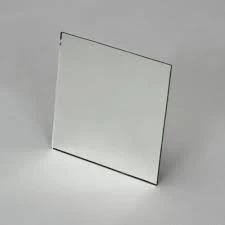

The Allure of White Reflective Glass A Modern Aesthetic
In the realm of architecture and design, materials play a pivotal role in shaping the ambiance and vibe of any space. Among these, one increasingly popular choice is white reflective glass. This unique material not only enhances the aesthetic appeal of buildings and interiors but also carries functional benefits that make it a preferred option among architects and designers.
Defining White Reflective Glass
White reflective glass is essentially a type of glass that has a special reflective coating applied to its surface, allowing it to bounce back light while maintaining an elegant, white hue. This finish can vary in terms of its reflective properties, allowing designers to choose a level of brightness and glare that fits their vision. Unlike traditional glass, which can sometimes create a stark, cold environment, white reflective glass offers a softer sheen, blending seamlessly with a variety of design styles.
Aesthetic Appeal
The visual charm of white reflective glass is undeniable. Its luminous quality can transform ordinary spaces into extraordinary environments. The glass acts not just as a barrier but as a canvas that reflects light and enhances the surrounding atmosphere. This is particularly beneficial in urban settings, where natural light can often be limited. By incorporating white reflective glass, architects can create buildings that seem to glow from within, drawing the eye and adding to the vibrancy of the cityscape.
Moreover, the neutrality of the white color allows for endless design flexibility. It can complement a sleek modernist structure or enhance the intricate details of a more traditional facade. This versatility makes white reflective glass an ideal choice for a range of applications, from residential homes to commercial buildings and public spaces.
Functional Benefits

Beyond its aesthetic qualities, white reflective glass boasts numerous functional advantages. One of the most significant is its ability to reduce heat gain within buildings. The reflective coating can deflect a considerable amount of solar radiation, leading to lower energy costs for cooling and making indoor environments more comfortable. This characteristic aligns perfectly with the growing emphasis on sustainability within the architecture industry, as reduced energy consumption translates to a smaller carbon footprint.
Additionally, the reflective properties of this glass can enhance privacy. While it allows natural light to permeate the space, it makes it more challenging for the outside world to see in, which is a highly desirable trait for many residential and commercial settings. This balance of natural light and privacy makes white reflective glass particularly appealing for offices, hotels, and homes.
Maintenance and Durability
Another appealing feature of white reflective glass is its relatively low maintenance requirements. Unlike other materials that may require frequent cleaning or treatments to maintain their appearance, this type of glass can withstand the test of time with minimal upkeep. Its durability means it can resist scratches and environmental stressors, making it a practical choice for architects who want longevity in their designs.
In Conclusion
White reflective glass represents a synthesis of beauty and functionality in modern design. Its ability to reflect light while maintaining an inviting and neutral appearance allows it to fit into diverse architectural styles. As the architectural world continues to evolve, embracing sustainability and innovative materials, white reflective glass stands out as a sophisticated and practical option.
Whether used for a towering skyscraper or a cozy home, it holds the promise of elevating spaces, enhancing environments, and creating a dialogue between the interior and the exterior. As more designers and homeowners become aware of its benefits, it is likely that white reflective glass will continue to gain traction in the field of architecture, shaping the skylines and interiors of the future. With its unique blend of aesthetic appeal and functional capabilities, this material is truly a reflection of contemporary design sensibilities.